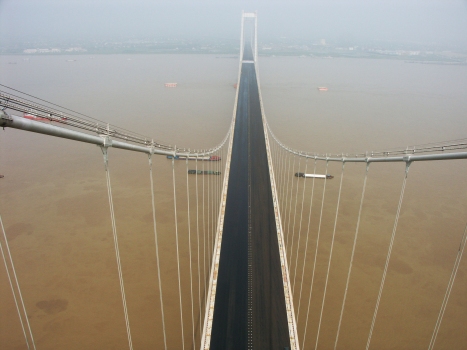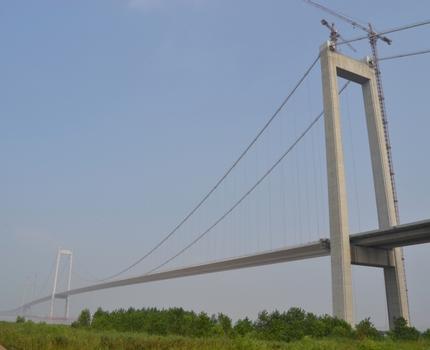General Information
| Completion: | 25 November 2012 |
|---|---|
| Status: | in use |
Project Type
| Structure: |
Two-span three-tower suspension bridge |
|---|---|
| Function / usage: |
Motorway bridge / freeway bridge |
| Material: |
Steel bridge |
| Plan view: |
Structurae Plus/Pro - Subscribe Now! |
| Support conditions: |
for registered users |
| Secondary structure(s): |
Structurae Plus/Pro - Subscribe Now! |
| Material: |
Structurae Plus/Pro - Subscribe Now! |
Awards and Distinctions
| 2014 |
award winner
for registered users Award of Merit for registered users |
|---|
Location
Technical Information
Dimensions
| total length | 6 821 m | |
| main bridge | ||
|---|---|---|
| main span | 2 x 1 080 m | |
| span lengths | 2 x 70 m - 100 m - 2 x 70 m - 2 x 1 080 m - 6 x 70 m | |
| number of spans | 13 | |
| pylon 1 | height | 178 m |
| pylon 2 | height | 194.0 m |
| pylon 3 | height | 178 m |
Case Studies and Applied Products
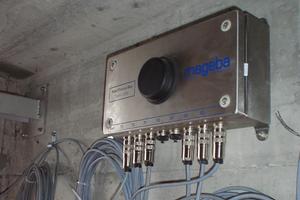
ROBO®CONTROL Permanent – Remote Monitoring System
Robo®Control detects the absence of machine specifications at the component and conveys these to a central computer. There the data are processed and they are made available to the clients through internet.
[more]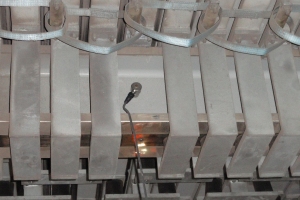
ROBO®SMART for Expansion Joints
The ROBO®SMART for expansion joints is a small, self-powered and integrated acquisition unit. The precise and durable sensors with robust electronics transfer the measured data via 3G GSM network to a mageba server for 24-hour online dat ... [more]

Structural health monitoring at Taizhou Bridge, China
The expansion joints which accommodate bridge deck movements while providing a driving surface for traffic are critical structural components, but much less robust than the structure as a whole, and must therefore be inspected and mainta ... [more]
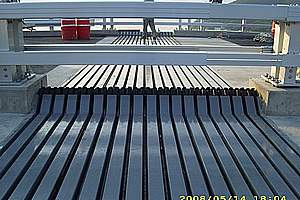
TENSA®MODULAR LR & LR-LS – Modular expansion joints
Modular Expansion Joints can be constructed for any movements, from about 100 mm up to 2,000 mm and more. They allow movements in all 3 directions and rotations around all 3 axes.
[more]Excerpt from Wikipedia
The Taizhou Yangtze River Bridge is a bridge complex over the Lower Yangtze River in Jiangsu Province in eastern China. The bridge connects Taizhou on the north bank, Yangzhong on an island in the river, and Yaoqiao Village of Zhenjiang Municipality on the south bank, and consists of a suspension bridge across the north branch stream and a pair of box-girder bridges across the south branch stream. Taizhou Bridge Complex opened in 2012.
History
The concept of a passage over the Yangtze was developed in 1998. It was not until December 2007 when the construction of the bridge began. It would become the first 1,000-meter-span and 3-tower-continuous-span suspension bridge. The idea of multiple towers and the pylon suspension lines to connect them was to decrease the impact that river flow can have on the structure. Being the first of its kind, the bridge would influence and shape various studies on structural engineering. this would lead to resolutions to known issues and research proposals in the engineering field. For example, a reasonable method of a wind resistance test was developed based on the unique structural integrity of the bridge. As a result, the Ministry of Communication of China recognizes the bridge as a symbol of innovation in bridge technology.
The bridge has provided many functional contributions as well. With the daily traffic flow being at 30,000 on the bridge, the commute between Taizhou, Jiangsui, and Changzhou has been reduced from 2 hours to 1. The structural achievement is seen as a promoter for the areas as it connects east to west. This progress is predicted to help accelerate the development of the surrounding cities, especially Taizhou.
Bridge components
Altogether the Taizhou Bridge construction project was 62.088 km (38.580 mi) long. The north bridge is 6,821 m (22,379 ft), including a three-tower suspension bridge with a pair of 1,080 m (3,540 ft) suspension spans, and 4,661 m (15,292 ft) of connecting approaches. The south bridge is 2,905 m (9,531 ft) with box-girder spans of 85+125x3+85 = 545 m (1,788 ft) and 85+125x2+85=420 m (1,380 ft). The north bank has 8 km (5.0 mi) of connecting highway. Yangzhong Island has 2.94 km (1.83 mi) of highway and the south bank has 40 km (25 mi) of connecting highway.
The north bridge's double suspension spans are among the longest in the world.
The structural integrity of the bridge is dependent on the main lines. However, these main lines are constantly exposed to harsh weathers which can affect its strength and longevity through erosion. To address this issue, The Jiangsu Province Communications Planning and Design Institute Limited Company established a "dehumidification system". This system involves humidity and temperature sensors so maintenance groups can have "real-time visibility of the condition of critical areas and can conduct analysis based on historical data to ensure science-based decision-making in the maintenance of the bridge’s main cables".
Awards
- 2013 Institution of Structural Engineers Supreme Award for structural engineering
- 2014 IABSE Outstanding Structure Award.
- American Society of Civil Engineers 2014 Outstanding Civil Engineering Achievement Award
- Front cover appearance on Bridge Design and Engineering magazine
Text imported from Wikipedia article "Taizhou Yangtze River Bridge" and modified on July 23, 2019 according to the CC-BY-SA 4.0 International license.
Participants
Relevant Web Sites
Relevant Publications
- (2009): China's Major Bridges. Presented at: IABSE Workshop: Recent Major Bridges, Shanghai, China, 11-12 May 2009, pp. 1-24.
- (2009): Construction of Suspension Bridges across the Yangtze River in Jiangsu, China. Presented at: IABSE Workshop: Recent Major Bridges, Shanghai, China, 11-12 May 2009, pp. 177-188.
- (2015): Design and static analysis of the Taizhou Yangtze River Bridge, China. In: Proceedings of the Institution of Civil Engineers - Bridge Engineering, v. 168, n. 1 (March 2015), pp. 52-63.
- (2012): Design of Stiffening Girder for Taizhou Yangtze River Highway Bridge. Presented at: 18th IABSE Congress: Innovative Infrastructures – Towards Human Urbanism, Seoul, Korea, 19-21 September 2012, pp. 1342-1349.
- (2007): Great demand and great challenge. Chinese Major Bridges under Construction for Improving Traffic Infrastructure Nationwide. Presented at: IABSE Symposium: Improving Infrastructure Worldwide, Weimar, Germany, 19-21 September 2007, pp. 6-9.
- About this
data sheet - Structure-ID
20032656 - Published on:
28/10/2007 - Last updated on:
02/04/2023

